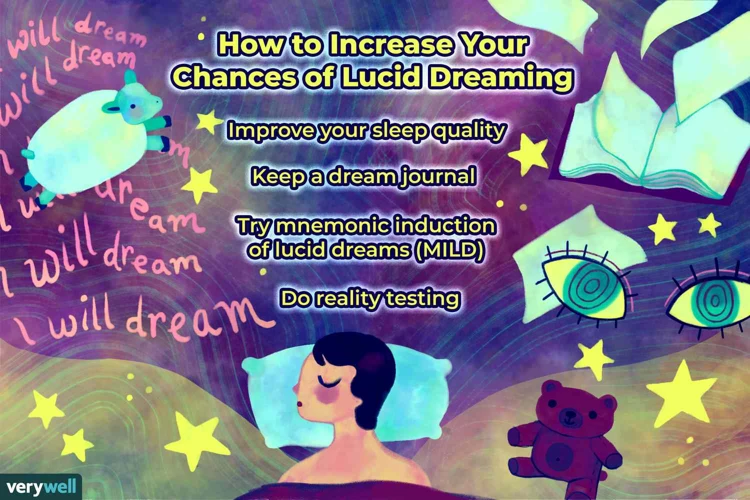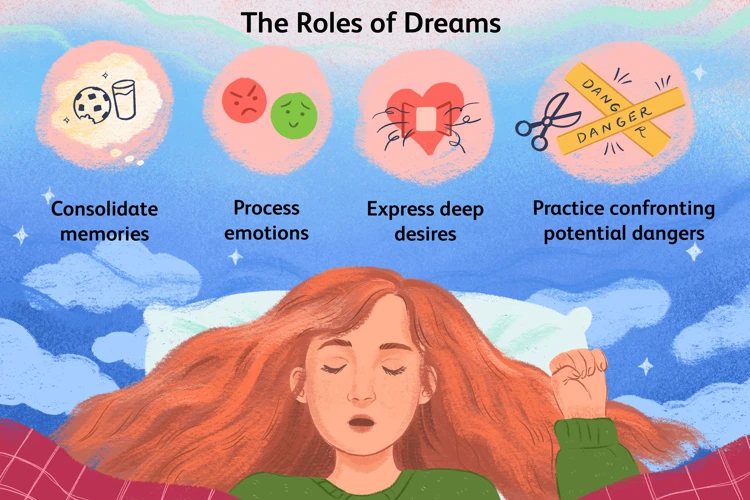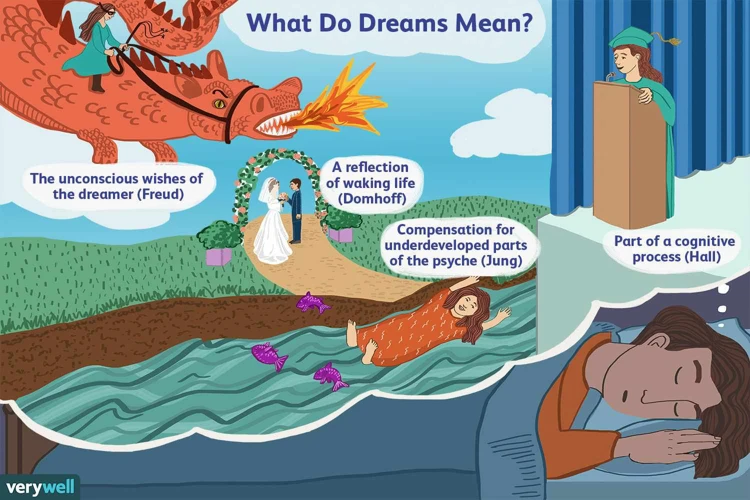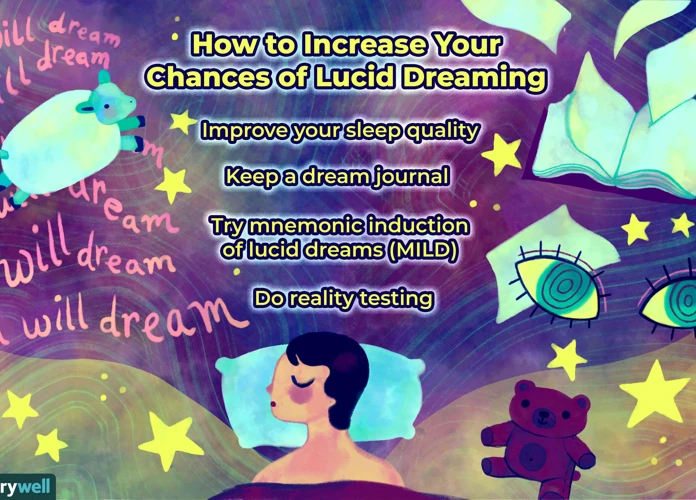Imagine finding yourself in a surreal landscape, fully aware that you are dreaming, only to be overcome by a sense of dread and terror. These are lucid nightmares – vivid and haunting dreams that can leave you questioning the boundaries between reality and imagination. As we delve into the causes and triggers of these enigmatic experiences, we unravel the complex web of psychological factors, environmental influences, medication-related causes, underlying sleep disorders, and the role of lucid dreaming techniques. Join us on this journey of understanding as we explore the fascinating world of lucid nightmares and discover ways to manage and minimize their impact.
What Are Lucid Nightmares?

Lucid nightmares are a peculiar phenomenon where individuals experience a heightened level of awareness during their nightmares. They occur when the dreamers become conscious that they are dreaming while still being engulfed in a nightmarish scenario. These dreams can be incredibly vivid and intense, making it difficult to distinguish between the dream world and reality. People who experience lucid nightmares often find themselves in situations that evoke fear, anxiety, or distress. In these nightmares, dreamers may have some control over their actions or the dream’s outcome, but they are unable to wake themselves up. Lucid nightmares can be incredibly unsettling, leaving individuals feeling exhausted and emotionally drained upon awakening. Although there is a link between lucid nightmares and sleep disorders, such as sleep apnea and narcolepsy (/link-between-lucid-nightmares-sleep-disorders/), they can also occur in individuals with no history of sleep disturbances. Understanding the nature of lucid nightmares is vital for addressing their causes and developing effective strategies for managing and overcoming them (/tips-and-techniques-for-managing-lucid-nightmares/). Exploring lucid dreaming techniques can empower dreamers to confront and resolve these distressing experiences (/lucid-dreaming-techniques-confront-resolve-nightmares/). By gaining insights into what lucid nightmares are, we can shed light on their intricacies and provide guidance for navigating this often perplexing aspect of the dream world.
The Difference Between Lucid Nightmares and Regular Nightmares

Understanding the difference between lucid nightmares and regular nightmares is crucial in comprehending the unique nature of these experiences. Here are some key distinguishing factors:
1. **Awareness and Control**: The main disparity lies in the level of awareness and control within the dream. In lucid nightmares, individuals are fully aware that they are dreaming and may have some degree of control over their actions or the dream’s outcome. Regular nightmares, on the other hand, are characterized by a lack of awareness or control, leaving the dreamer feeling helpless and trapped within the dream.
2. **Intensity and Vividity**: Lucid nightmares tend to be more intense and vivid compared to regular nightmares. The sensory details and emotions experienced within lucid nightmares can feel exceptionally real, leading to a heightened sense of fear, anxiety, or distress.
3. **Conscious Boundary**: Lucid nightmares blur the line between the dream world and reality. Dreamers may have difficulties distinguishing between the dream and waking life, which can create confusion and a sense of disorientation. Regular nightmares are typically recognized as dreams after waking up, without the same confusion about reality.
4. **Memory Retention**: Due to the heightened awareness in lucid nightmares, individuals often have a better recollection of the dream upon waking. They can remember specific details, events, and emotions more vividly. Conversely, regular nightmares may fade from memory more quickly or be recalled only vaguely.
5. **Potential for Resolution**: Lucid nightmares may offer the possibility of resolution or transformation within the dream state. Dreamers who become aware they are dreaming can actively work on changing the dream’s narrative or confronting their fears. Regular nightmares usually play out without the dreamer’s intervention or influence.
Understanding these differences enables individuals to identify when they are experiencing lucid nightmares and employ relevant strategies to manage them effectively. By recognizing the unique characteristics of lucid nightmares, dreamers can gain insights into their dream experiences and work towards finding relief and resolution.
Common Causes of Lucid Nightmares

There are several common causes that can trigger lucid nightmares. Understanding these causes can help shed light on why these vivid and distressing dreams occur. Here are some of the key factors:
1. Psychological Factors:
– Anxiety and Stress: High levels of anxiety and stress can contribute to the occurrence of lucid nightmares. These dreams may serve as a reflection of unresolved psychological issues or overwhelming emotions.
– PTSD and Trauma: Individuals who have experienced traumatic events or suffer from post-traumatic stress disorder (PTSD) are more susceptible to lucid nightmares. Trauma-related triggers within dreams can lead to intense and vivid nightmares.
2. Environmental Triggers:
– Sleeping Conditions: Sleeping in uncomfortable or unfamiliar environments, such as during travel or in a noisy setting, can disrupt regular sleep patterns and increase the likelihood of experiencing lucid nightmares.
– External Stimuli: External stimuli like bright lights, loud noises, or disturbances during sleep can infiltrate dreams and influence their content, potentially leading to lucid nightmares.
3. Medication and Substance-related Causes:
– Prescription Medications: Certain medications, particularly those that affect the central nervous system, may disrupt regular sleep patterns and contribute to the occurrence of lucid nightmares.
– Drug and Alcohol Consumption: Substances such as alcohol, recreational drugs, or even excessive caffeine intake can interfere with healthy sleep cycles and increase the likelihood of experiencing lucid nightmares.
4. Underlying Sleep Disorders:
– Sleep Apnea: Sleep apnea, characterized by interrupted breathing during sleep, can contribute to disturbances in sleep patterns and increase the likelihood of experiencing vivid and unsettling dreams, including lucid nightmares.
– Narcolepsy: Individuals with narcolepsy, a neurological disorder that disrupts sleep-wake cycles, may experience fragmented sleep and an increased prevalence of lucid nightmares.
Identifying these common causes of lucid nightmares can be helpful in pinpointing potential triggers and implementing strategies to minimize their occurrence. It is important to remember that each individual’s experience is unique, and it may require some self-reflection and professional guidance to identify and address the underlying causes effectively.
Psychological Factors Involved

Psychological factors play a significant role in the occurrence of lucid nightmares. One of the key contributors is anxiety and stress, which can manifest in the form of recurring distressing dreams. These dreams tend to reflect the individual’s worries, fears, and unresolved conflicts, amplifying the intensity of the nightmare experience. Individuals who have experienced trauma, such as post-traumatic stress disorder (PTSD), are more likely to have lucid nightmares as their mind processes and attempts to reconcile the traumatic events. These nightmares may serve as a way for the subconscious to process and confront unresolved emotions and memories. Understanding the psychological factors at play in lucid nightmares is crucial for addressing and managing these distressing experiences, allowing individuals to find healing and relief.
Anxiety and Stress
Anxiety and stress play a significant role in the occurrence of lucid nightmares. When individuals experience high levels of anxiety or chronic stress, it can manifest in their dreams as intense and distressing scenarios. The fear and worry associated with anxiety can infiltrate the dream state, amplifying the feelings of dread and terror. Stress, on the other hand, can trigger hyperarousal during sleep, leading to fragmented and disrupted dreams. The emotional and psychological strain that anxiety and stress impose on individuals can contribute to the development of lucid nightmares. The fear of experiencing these nightmares can create a vicious cycle, as anticipation and anxiety about sleep can perpetuate the occurrence of lucid nightmares. Managing anxiety and stress through techniques like relaxation exercises, mindfulness, and stress reduction strategies can help alleviate the frequency and intensity of lucid nightmares. Additionally, seeking support from mental health professionals can provide valuable guidance and coping strategies to address these underlying factors and improve overall well-being.
PTSD and Trauma
PTSD (Post-Traumatic Stress Disorder) and trauma play significant roles in the occurrence of lucid nightmares. Individuals who have experienced traumatic events or suffer from PTSD are more likely to have intense and distressing dreams. The vividness and realism of these dreams can be attributed to the way in which traumatic memories impact the brain. Trauma disrupts the normal functioning of the amygdala, the part of the brain responsible for processing emotions and fear responses. As a result, individuals with PTSD often experience heightened anxiety, hypervigilance, and nightmares related to their trauma. These nightmares can manifest as lucid nightmares, where the dreamer is not only aware of the dream but also experiences a high level of distress and re-experiencing of traumatic events. It is crucial for individuals with PTSD or a history of trauma to seek professional help and therapy to address and process their past experiences. Through therapy and treatment, individuals can gain tools to manage and alleviate the frequency and intensity of lucid nightmares associated with trauma.
Environmental Triggers

Environmental triggers play a significant role in the occurrence of lucid nightmares. The sleeping conditions, such as an uncomfortable bed or an unsuitable sleeping environment, can disrupt the quality of sleep and increase the likelihood of experiencing vivid and unsettling dreams. External stimuli, such as noise, light, or temperature fluctuations, can also contribute to the intensity of nightmares. Research suggests that exposure to bright lights or electronic screens before bedtime can interfere with the natural sleep-wake cycle and potentially lead to more frequent and disturbing dreams. Similarly, an emotionally charged or stressful environment can contribute to the manifestation of lucid nightmares. Creating a sleep-friendly environment that promotes relaxation and tranquility, such as a comfortable bed and a quiet, dark room, can help minimize the impact of environmental triggers and reduce the occurrence of lucid nightmares.
Sleeping Conditions
Sleeping conditions can have a significant impact on the occurrence of lucid nightmares. The environment in which we sleep plays a crucial role in our dream experiences. Here are some key factors related to sleeping conditions that can contribute to lucid nightmares:
1. Sleep Environment: Creating a comfortable and conducive sleep environment can help minimize the chances of experiencing lucid nightmares. Factors such as temperature, lighting, noise levels, and mattress comfort can all affect the quality of sleep and dream content. Ensuring a quiet, dark, and comfortable sleep space can promote restful sleep and reduce the likelihood of nightmares.
2. Sleep Hygiene: Practicing good sleep hygiene habits is essential for promoting quality sleep and minimizing the risk of lucid nightmares. Establishing a consistent sleep schedule, avoiding stimulating activities close to bedtime, and creating a relaxing pre-sleep routine can all contribute to a more peaceful sleep environment. Maintaining a regular sleep routine helps regulate the sleep-wake cycle, promoting better overall sleep quality.
3. Sleep Position: Believe it or not, sleep position can also influence dream content. Sleeping in uncomfortable or awkward positions can increase the likelihood of experiencing nightmares, including lucid nightmares. Finding a comfortable and supportive sleep position that allows for restful sleep can be beneficial in reducing the occurrence of unsettling dream experiences.
4. Bedtime Rituals: Engaging in calming bedtime rituals can help create a relaxed and peaceful mindset before sleep. Activities such as reading a book, taking a warm bath, practicing relaxation techniques, or listening to soothing music can help to ease stress and anxiety, leading to a more restful sleep and potentially reducing the frequency of lucid nightmares.
By paying attention to these factors and creating a sleep environment that promotes relaxation and tranquility, individuals may be able to minimize the occurrence of lucid nightmares and experience more peaceful dreams.
External Stimuli
External stimuli play a significant role in triggering lucid nightmares. These stimuli can include various factors in our environment that influence our dreams. For example, loud noises, such as a car alarm or thunderstorm, can infiltrate our dreamscapes and manifest as intense and unsettling scenarios. Similarly, bright lights, such as streetlights or flashing alarm clocks, can seep into our dreams, distorting the dream narrative and creating a sense of unease. Additionally, extreme temperatures, such as feeling overly hot or cold while sleeping, may find their way into our dreams, amplifying the intensity and discomfort of the nightmare experience. Even subtle disturbances, like the touch of a pet or the sensation of a partner moving in bed, can influence the content of our dreams. These external stimuli have the power to disrupt the delicate balance between our subconscious mind and consciousness, contributing to the formation of vivid and distressing lucid nightmares. Creating a sleep environment that is quiet, comfortable, and free of disruptions can help minimize the impact of external stimuli on our dreams and reduce the frequency of lucid nightmares.
Medication and Substance-related Causes

Medication and substance-related causes are potential triggers of lucid nightmares. Certain prescription medications, such as antidepressants, antipsychotics, and medications for Parkinson’s disease, may have side effects that disrupt sleep patterns and lead to vivid and disturbing dreams. These medications can alter neurotransmitter levels, interfere with REM sleep, and increase the likelihood of experiencing lucid nightmares. Similarly, recreational drug use and alcohol consumption can significantly impact sleep quality and contribute to the occurrence of lucid nightmares. Substances such as marijuana, hallucinogens, and stimulants can disrupt the normal sleep cycle, resulting in intense and unsettling dream experiences. It is important to recognize the potential role of medication and substance use and consider them as potential factors when exploring the causes of lucid nightmares. If you are experiencing lucid nightmares and are taking any medications or engaging in substance use, consulting with a healthcare professional is advised to assess the potential impact and explore alternative options.
Prescription Medications
Prescription medications can play a significant role in triggering lucid nightmares. Certain medications, particularly those that affect the central nervous system, have been known to disrupt the normal sleep cycle and provoke vivid and unsettling dreams. Antidepressants, such as selective serotonin reuptake inhibitors (SSRIs) or tricyclic antidepressants (TCAs), are commonly associated with an increase in dream intensity. These medicines can alter neurotransmitter levels in the brain, affecting the quality and content of dreams. Other medications, such as beta-blockers, used to treat high blood pressure or certain heart conditions, have also been linked to the emergence of lucid nightmares. These drugs work by impacting the regulation of adrenaline, which can influence dream experiences. It is important to note that not everyone who takes these medications will experience lucid nightmares, as individual reactions may vary. If you suspect that your prescription medication is contributing to these unsettling dreams, it is crucial to speak with your healthcare provider. They can guide you on potential alternatives or adjustments to your medication regimen to alleviate the occurrence of lucid nightmares.
Drug and Alcohol Consumption
Drug and alcohol consumption can significantly contribute to the occurrence and intensity of lucid nightmares. When individuals consume substances such as alcohol, marijuana, or certain prescription medications, it can disrupt their sleep patterns and interfere with REM sleep, the stage during which dreams, including nightmares, occur. Intoxication from drugs or alcohol can lead to fragmented sleep, frequent awakenings, and a decrease in overall sleep quality. This disruption can trigger an increase in vivid and distressing dreams, including lucid nightmares. Additionally, substances like stimulants or hallucinogens can alter brain chemistry and induce vivid dreams or nightmares. It is important to note that the effects of drug and alcohol consumption on dreams and nightmares can vary depending on the individual and the specific substance involved. While some individuals may experience an increase in lucid nightmares due to substance use, others may not be affected in the same way. It is always advisable to consult with a healthcare professional or addiction specialist if you suspect that drug or alcohol consumption is impacting your sleep and dream experiences.
Underlying Sleep Disorders

Underlying sleep disorders can play a significant role in the occurrence of lucid nightmares. Two common sleep disorders associated with lucid nightmares are sleep apnea and narcolepsy. Sleep apnea, characterized by interruptions in breathing during sleep, can lead to fragmented and poor-quality sleep, increasing the likelihood of experiencing vivid dreams, including lucid nightmares. Narcolepsy, on the other hand, involves excessive daytime sleepiness and sudden sleep attacks, which can disrupt normal sleep patterns and contribute to the occurrence of lucid nightmares. These sleep disorders not only disrupt the sleep cycle but also impact the overall quality of sleep, making individuals more susceptible to intense and distressing dreams. It is important to address and manage underlying sleep disorders to alleviate the frequency and intensity of lucid nightmares, as improving sleep can have a positive impact on overall mental well-being.
Sleep Apnea
Sleep apnea, a sleep disorder characterized by interrupted breathing during sleep, can play a role in the occurrence of lucid nightmares. This condition causes the throat muscles to relax and block the airway, leading to moments of decreased or halted airflow. The brain responds to this by briefly waking the individual up to resume normal breathing, often causing them to forget these frequent awakenings. However, these brief episodes of wakefulness can disrupt the sleep cycle and prevent individuals from entering deep, restorative stages of sleep. As a result, the lack of quality sleep can lead to an increase in fragmented dreams, including lucid nightmares. Additionally, the intermittent drops in oxygen levels during sleep apnea episodes may have an impact on brain function, altering the dream experience and potentially contributing to the intensity of nightmares. It is important to note that addressing and treating sleep apnea may not only improve overall sleep quality but also reduce the frequency and severity of lucid nightmares. Seeking professional help and undergoing a sleep study can aid in diagnosing and managing sleep apnea, potentially providing relief from both the sleep disorder and the associated nightmares.
Narcolepsy
Narcolepsy is a neurological disorder characterized by excessive daytime sleepiness and uncontrollable episodes of falling asleep. While it primarily affects the sleep-wake cycle, narcolepsy can also have a significant impact on dreams, including the occurrence of lucid nightmares. One of the key features of narcolepsy is the intrusion of rapid eye movement (REM) sleep into wakefulness or other stages of sleep. During REM sleep, when most dreaming occurs, the brain activity is similar to that of being awake. This can lead to vivid and intense dreams, including lucid nightmares. Additionally, narcolepsy can disrupt the overall sleep architecture, leading to fragmented and disrupted sleep patterns, which can contribute to the occurrence of nightmares. The exact mechanisms behind the relationship between narcolepsy and lucid nightmares are still being studied, but it is believed that the dysregulation of neurotransmitters, such as hypocretin, may play a role. Understanding the connection between narcolepsy and lucid nightmares is crucial in managing both conditions effectively. Treatment approaches for narcolepsy, such as medication and lifestyle adjustments, can help alleviate symptoms of excessive daytime sleepiness and improve overall sleep quality, which in turn may reduce the occurrence of lucid nightmares.
Role of Lucid Dreaming Techniques

The role of lucid dreaming techniques in managing and navigating lucid nightmares is crucial. Lucid dreaming techniques involve training oneself to become aware of being in a dream state while dreaming. This awareness provides an opportunity to exercise control and influence over the dream’s narrative and elements. By practicing lucid dreaming techniques, individuals can potentially transform their lucid nightmares into more positive or neutral experiences.
One technique is reality testing, where individuals consistently question their waking state throughout the day. This habit carries over into dreams, leading to increased awareness and lucidity during nightmares. Another technique involves keeping a dream journal, recording dreams upon waking. This practice helps with dream recall and can also provide insights and patterns related to lucid nightmares.
Another powerful technique is visualization and rehearsal. This involves mentally rehearsing a positive outcome or resolution to a specific lucid nightmare scenario during waking hours. By repeatedly visualizing a desired outcome, individuals can increase the likelihood of experiencing a positive resolution in their actual lucid nightmare.
It’s worth noting that lucid dreaming techniques may not completely eliminate lucid nightmares, but they can empower individuals to better navigate and confront the challenges within these dreams. With practice and dedication, lucid dreaming techniques can become a valuable tool in managing and transforming lucid nightmares into more manageable and even positive dream experiences.
Emotional and Traumatic Triggers

Emotional and traumatic triggers play a significant role in the occurrence of lucid nightmares. Our dreams often serve as a reflection of our subconscious mind and can be influenced by the emotional and traumatic experiences we have faced. When we undergo intense emotional states such as sadness, grief, or fear, these emotions can manifest in our dreams, leading to lucid nightmares. Traumatic events, such as accidents, abuse, or witnessing violence, can also leave a lasting impact on our psyche, making us more susceptible to experiencing lucid nightmares. The memories and emotions associated with these traumatic experiences can resurface during sleep, creating vivid and distressing dream scenarios. These triggers can be unique to each individual, as they are deeply personal and tied to their life experiences. It is important to recognize and acknowledge these emotional and traumatic triggers to address any underlying emotional wounds. Seeking therapy or counseling can be beneficial in helping individuals process and heal from their past traumas, reducing the frequency and intensity of lucid nightmares. Additionally, practicing stress-reducing techniques, such as mindfulness and relaxation exercises, can help regulate emotions and promote a sense of calm before sleep, potentially minimizing the occurrence of lucid nightmares. By addressing and working through emotional and traumatic triggers, individuals can cultivate a healthier dream state and find peace within their subconscious minds.
How to Manage and Minimize Lucid Nightmares
Managing and minimizing lucid nightmares can be a challenging task, but with the right strategies, it is possible to regain control and reduce their frequency and intensity. Journaling and self-reflection are effective techniques for exploring the underlying emotions and triggers of lucid nightmares. By keeping a dream journal and analyzing patterns or common themes, individuals can gain valuable insights and potentially identify strategies for addressing these issues. Practicing mindfulness and relaxation techniques can also be beneficial in managing lucid nightmares. Techniques such as deep breathing, meditation, and progressive muscle relaxation can help calm the mind and body before going to sleep, creating a more peaceful sleep environment. Seeking professional help from a therapist or sleep specialist can provide additional support and guidance in understanding and managing lucid nightmares. These professionals can offer specific strategies tailored to individual needs and assist in addressing any underlying psychological factors contributing to the nightmares. With a combination of self-care practices, professional guidance, and a proactive approach, it is possible to minimize the impact of lucid nightmares and regain a sense of peace and control during sleep.
Journaling and Self-Reflection
Journaling and self-reflection can be powerful tools for managing and minimizing lucid nightmares. By keeping a dream journal, individuals can gain valuable insights into the patterns and themes present in their nightmares. This practice involves regularly recording details of dreams upon awakening, including emotions, images, and any significant events or symbols. By documenting these dreams, individuals can start to identify recurring themes or triggers that may be contributing to their lucid nightmares.
Self-reflection plays a vital role in understanding the underlying emotions and psychological factors associated with lucid nightmares. Taking the time to reflect on the meaning behind the nightmares can provide a deeper understanding of one’s fears, anxieties, or unresolved issues. It allows individuals to explore their subconscious mind and make connections between their waking life experiences and the content of their dreams.
To effectively journal and engage in self-reflection, consider the following tips:
- Consistency: Make journaling a regular habit, ideally writing in the journal immediately after waking up from a lucid nightmare.
- Detail: Provide as much detail as possible, including specific emotions, sensory experiences, and any important dream symbols.
- Reflection: Take time to reflect on the possible meanings behind the dream content. Consider any underlying fears, unresolved issues, or stressors that may be connected to the nightmares.
- Patterns: Look for patterns or common themes that emerge from the dream journal entries. This can help identify triggers or recurring elements in the nightmares.
- Seeking guidance: If journaling and self-reflection alone may not be enough, consider seeking guidance from a therapist or dream specialist who can provide expert insights and assistance.
Journaling and self-reflection are valuable practices that allow individuals to gain a deeper understanding of their lucid nightmares. By actively engaging in self-exploration, individuals can gradually unravel the underlying causes of these nightmares and take steps towards managing and minimizing their impact.
Mindfulness and Relaxation Techniques
Mindfulness and relaxation techniques can play a crucial role in managing and minimizing lucid nightmares. These techniques focus on cultivating a state of calmness and awareness, allowing individuals to gain control over their thoughts and emotions. Practicing mindfulness involves paying attention to the present moment without judgment. By incorporating mindfulness into their daily routines, individuals can develop a heightened sense of self-awareness and learn to recognize and manage any signs of stress or anxiety that may contribute to lucid nightmares.
One effective technique is deep breathing, which involves taking slow, deep breaths to promote relaxation and reduce tension. Deep breathing can be done before bed or during the occurrence of a lucid nightmare to help regain control and induce a sense of calmness. Progressive muscle relaxation is another technique that involves consciously tensing and then releasing each muscle group in the body. This technique helps relieve physical tension and promotes overall relaxation.
Guided imagery is a relaxation technique that involves visualizing a serene and peaceful setting. Individuals can mentally transport themselves to a tranquil scene, such as a peaceful beach or a lush forest, to help counteract the distressing elements of a lucid nightmare. Guided imagery can be practiced before sleep or during a lucid nightmare to shift the dream’s focus towards a more positive and calming direction.
Mindfulness meditation, which involves focusing attention on the breath or a specific object, can also be beneficial. By practicing mindfulness meditation regularly, individuals develop the ability to observe their thoughts and emotions without getting caught up in them. This increased self-awareness can help identify any triggers or patterns associated with lucid nightmares and provide a greater sense of control.
It’s important to note that while mindfulness and relaxation techniques can be helpful in managing lucid nightmares, they may not eliminate them entirely. It’s a gradual process that requires patience and consistency. Combining these techniques with other strategies, such as maintaining a consistent sleep schedule, creating a relaxing sleep environment, and seeking support from mental health professionals, can further enhance their effectiveness.
Seeking Professional Help
In some cases, seeking professional help may be necessary to manage and minimize lucid nightmares. Here are some reasons why consulting a healthcare professional or a licensed therapist can be beneficial:
- Expert guidance: Professionals specializing in sleep disorders or psychology can provide expert guidance tailored to your specific needs. They can help you understand the underlying causes of your lucid nightmares and develop a personalized treatment plan.
- Identification of underlying issues: A professional can assist in identifying any underlying psychological or emotional issues that may be contributing to your lucid nightmares. By addressing these underlying issues, you may find relief from recurrent nightmares.
- Therapeutic interventions: Therapists can offer various therapeutic interventions, such as cognitive-behavioral therapy (CBT) or eye movement desensitization and reprocessing (EMDR), to help you process and cope with traumatic experiences that may be triggering your nightmares.
- Medication management: If your lucid nightmares are associated with a diagnosed sleep disorder or mental health condition, a healthcare professional can prescribe appropriate medications to manage these conditions effectively.
- Support and reassurance: Simply having someone to talk to and confide in can provide a great deal of comfort and reassurance. Professionals are trained to provide a safe and supportive environment for you to express your concerns and fears.
Remember that seeking professional help is a proactive step towards understanding and addressing your lucid nightmares. It is important to reach out to the right healthcare professionals or therapists who specialize in sleep disorders or dream analysis to receive the most effective support and treatment.
Conclusion
In conclusion, lucid nightmares are remarkable and unsettling experiences where individuals find themselves aware of their dreaming state while being caught in the depths of a terrifying dream. These nightmares can be triggered by a range of factors, including psychological influences, environmental conditions, medication usage, and underlying sleep disorders. Anxiety, stress, trauma, and emotional triggers play significant roles in the occurrence of lucid nightmares. Additionally, sleeping conditions and external stimuli can contribute to the intensity and frequency of these unsettling dreams. Managing and minimizing lucid nightmares requires a multi-faceted approach, including techniques such as journaling and self-reflection, mindfulness and relaxation exercises, and, when necessary, seeking professional help. Recognizing the unique nature of lucid nightmares and understanding their causes is the first step towards effectively addressing and resolving these distressing experiences. With the right strategies and support, individuals can gain control over their dreams and find relief from the burden of lucid nightmares.
Frequently Asked Questions
1. Can lucid nightmares be controlled?
While it is possible to have some level of control in lucid nightmares, complete control is not guaranteed. The level of control varies from person to person and from dream to dream.
2. Are lucid nightmares the same as sleep paralysis?
No, lucid nightmares and sleep paralysis are separate experiences. Lucid nightmares occur during dreams, while sleep paralysis is a state of temporary muscle paralysis that can happen upon waking up or falling asleep.
3. Can lucid nightmares cause physical harm?
Lucid nightmares are primarily psychological experiences and do not typically cause physical harm. However, the intense emotions and fear associated with these dreams can have an impact on overall well-being and sleep quality.
4. Are there any benefits to experiencing lucid nightmares?
While lucid nightmares can be distressing, they can also present opportunities for personal growth and self-exploration. Some individuals use lucid nightmares as a means to confront and overcome their fears within the safety of a dream environment.
5. Are certain individuals more prone to having lucid nightmares?
There is no definitive answer to this question, as lucid nightmares can occur in anyone. However, individuals who frequently experience nightmares or have a history of trauma or anxiety may be more likely to have lucid nightmares.
6. Can lucid nightmares be a sign of a mental health disorder?
While lucid nightmares themselves do not indicate a specific mental health disorder, they can be associated with conditions such as post-traumatic stress disorder (PTSD) and anxiety. If you are concerned about your mental health, it is advisable to consult a healthcare professional.
7. Can medication help in managing lucid nightmares?
Medication may be prescribed to alleviate underlying conditions, such as anxiety or sleep disorders, which can contribute to lucid nightmares. However, it is essential to work with a healthcare professional to determine the appropriate treatment plan.
8. Can lucid nightmares occur during daytime naps?
Yes, lucid nightmares can occur during daytime naps. The likelihood of experiencing a lucid nightmare during a nap is influenced by various factors, including sleep quality, sleep deprivation, and individual sleep patterns.
9. Can lucid nightmares be interpreted as messages from the subconscious mind?
Interpretation of dreams, including lucid nightmares, varies among individuals and cultures. While some people may find meaning or significance in their dreams, others may view them as a product of the subconscious mind without specific messages.
10. Can lucid nightmares be entirely eliminated?
Eliminating lucid nightmares completely may not be possible for everyone. However, by addressing underlying causes, learning coping strategies, and incorporating relaxation techniques, it may be possible to minimize the occurrence and impact of lucid nightmares.








